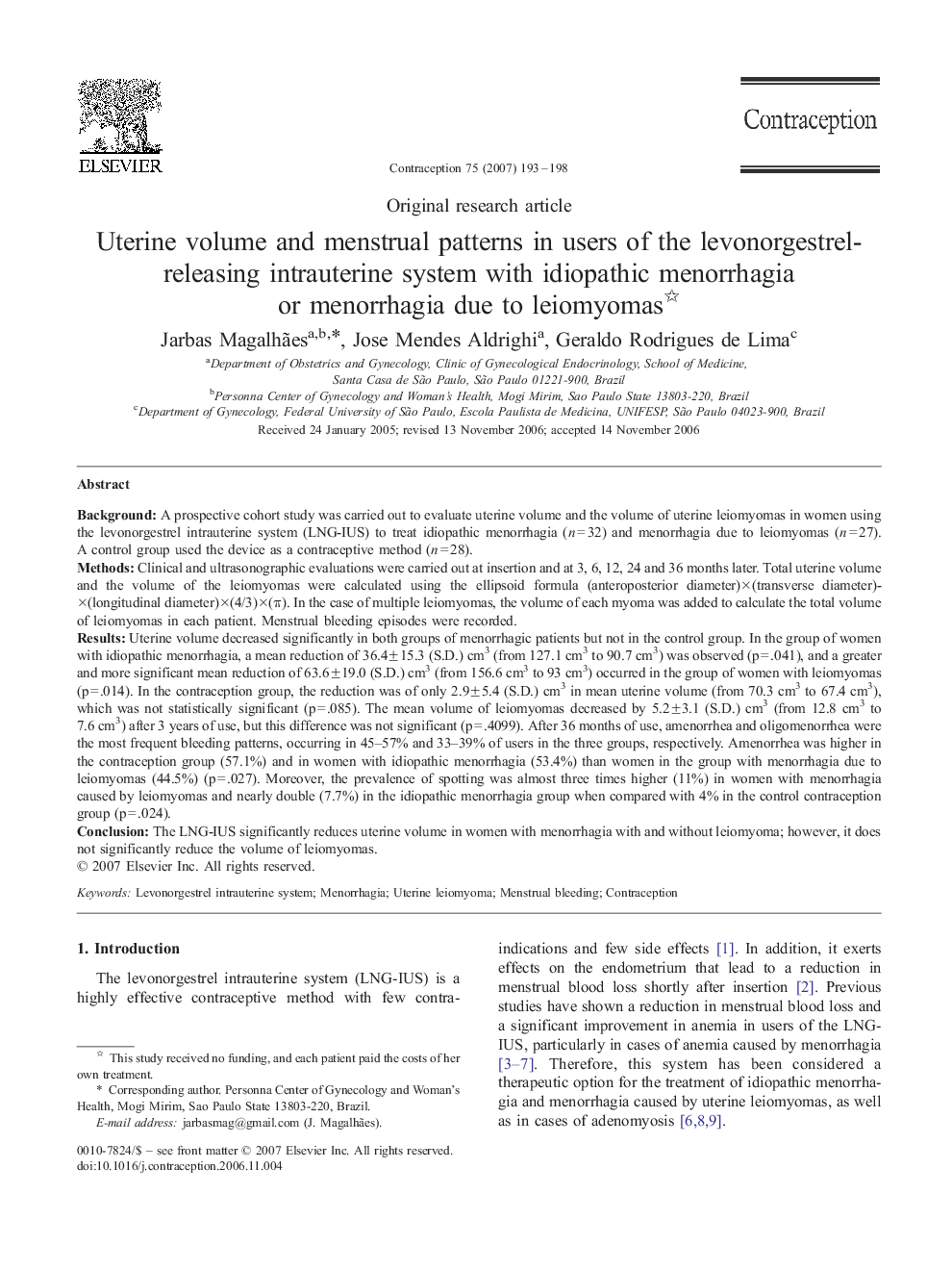| کد مقاله | کد نشریه | سال انتشار | مقاله انگلیسی | نسخه تمام متن |
|---|---|---|---|---|
| 3915969 | 1251528 | 2007 | 6 صفحه PDF | دانلود رایگان |

BackgroundA prospective cohort study was carried out to evaluate uterine volume and the volume of uterine leiomyomas in women using the levonorgestrel intrauterine system (LNG-IUS) to treat idiopathic menorrhagia (n=32) and menorrhagia due to leiomyomas (n=27). A control group used the device as a contraceptive method (n=28).MethodsClinical and ultrasonographic evaluations were carried out at insertion and at 3, 6, 12, 24 and 36 months later. Total uterine volume and the volume of the leiomyomas were calculated using the ellipsoid formula (anteroposterior diameter)×(transverse diameter)×(longitudinal diameter)×(4/3)×(π). In the case of multiple leiomyomas, the volume of each myoma was added to calculate the total volume of leiomyomas in each patient. Menstrual bleeding episodes were recorded.ResultsUterine volume decreased significantly in both groups of menorrhagic patients but not in the control group. In the group of women with idiopathic menorrhagia, a mean reduction of 36.4±15.3 (S.D.) cm3 (from 127.1 cm3 to 90.7 cm3) was observed (p=.041), and a greater and more significant mean reduction of 63.6±19.0 (S.D.) cm3 (from 156.6 cm3 to 93 cm3) occurred in the group of women with leiomyomas (p=.014). In the contraception group, the reduction was of only 2.9±5.4 (S.D.) cm3 in mean uterine volume (from 70.3 cm3 to 67.4 cm3), which was not statistically significant (p=.085). The mean volume of leiomyomas decreased by 5.2±3.1 (S.D.) cm3 (from 12.8 cm3 to 7.6 cm3) after 3 years of use, but this difference was not significant (p=.4099). After 36 months of use, amenorrhea and oligomenorrhea were the most frequent bleeding patterns, occurring in 45–57% and 33–39% of users in the three groups, respectively. Amenorrhea was higher in the contraception group (57.1%) and in women with idiopathic menorrhagia (53.4%) than women in the group with menorrhagia due to leiomyomas (44.5%) (p=.027). Moreover, the prevalence of spotting was almost three times higher (11%) in women with menorrhagia caused by leiomyomas and nearly double (7.7%) in the idiopathic menorrhagia group when compared with 4% in the control contraception group (p=.024).ConclusionThe LNG-IUS significantly reduces uterine volume in women with menorrhagia with and without leiomyoma; however, it does not significantly reduce the volume of leiomyomas.
Journal: Contraception - Volume 75, Issue 3, March 2007, Pages 193–198